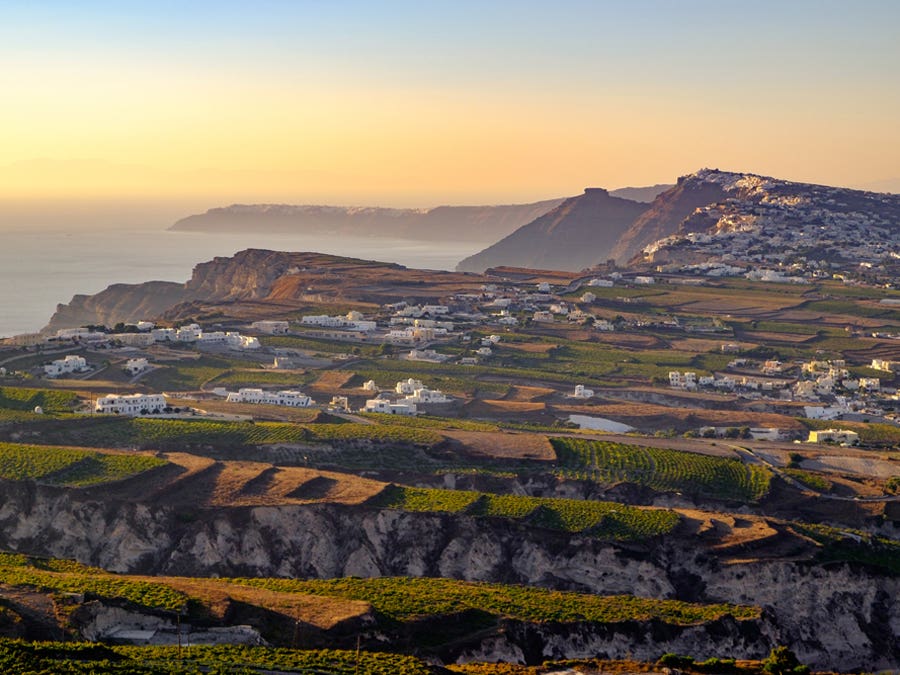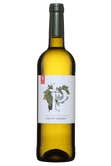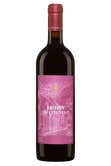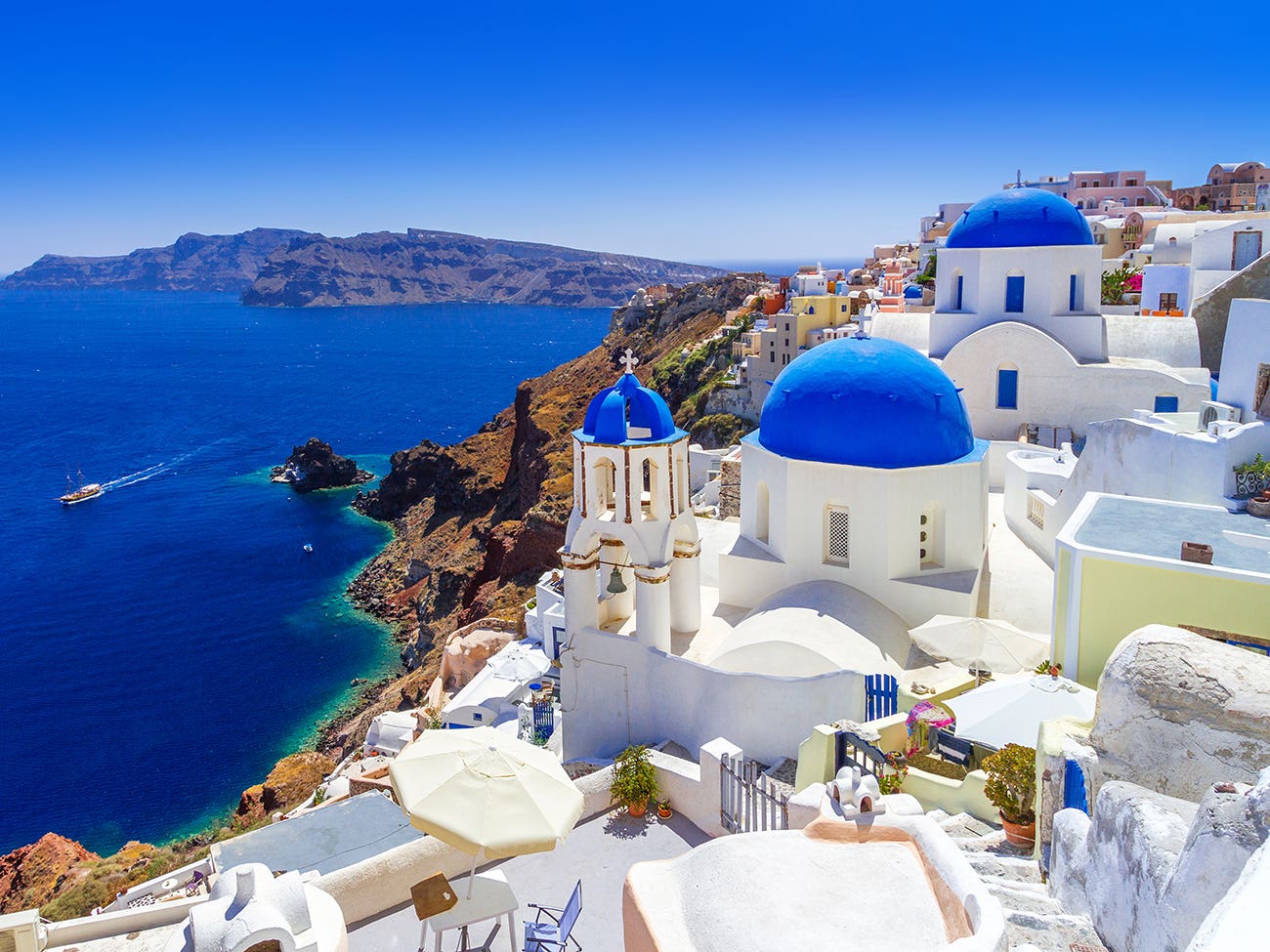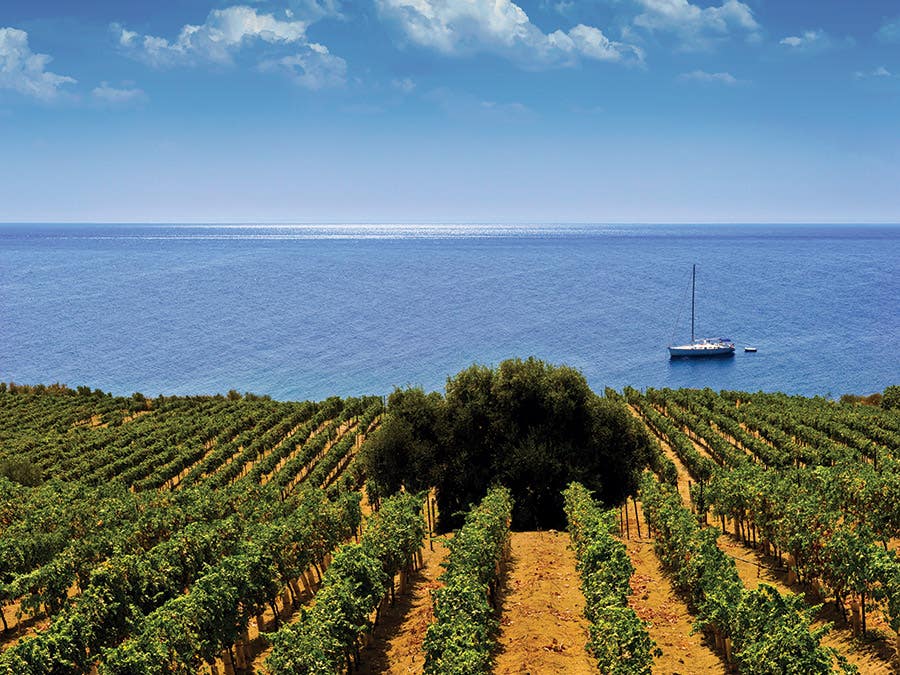Everyone knows that a vineyard’s location has a major impact on the quality and flavour of its wine. From the soil to the wind and the sun, nature’s elements vary depending on the latitude, altitude and terrain, which combine to create unique agricultural conditions. The way a plot of land is oriented also comes into play. That means location is key for winemakers—the profile, quality and complexity of their wines will depend on it.
Ready for take-off?
Prepare to discover five of the most spectacular terroirs in the world—and the challenges inherent to each. Destination: Italy, Portugal, Greece, Alsace, and the Middle East!


High-altitude vineyards around Etna
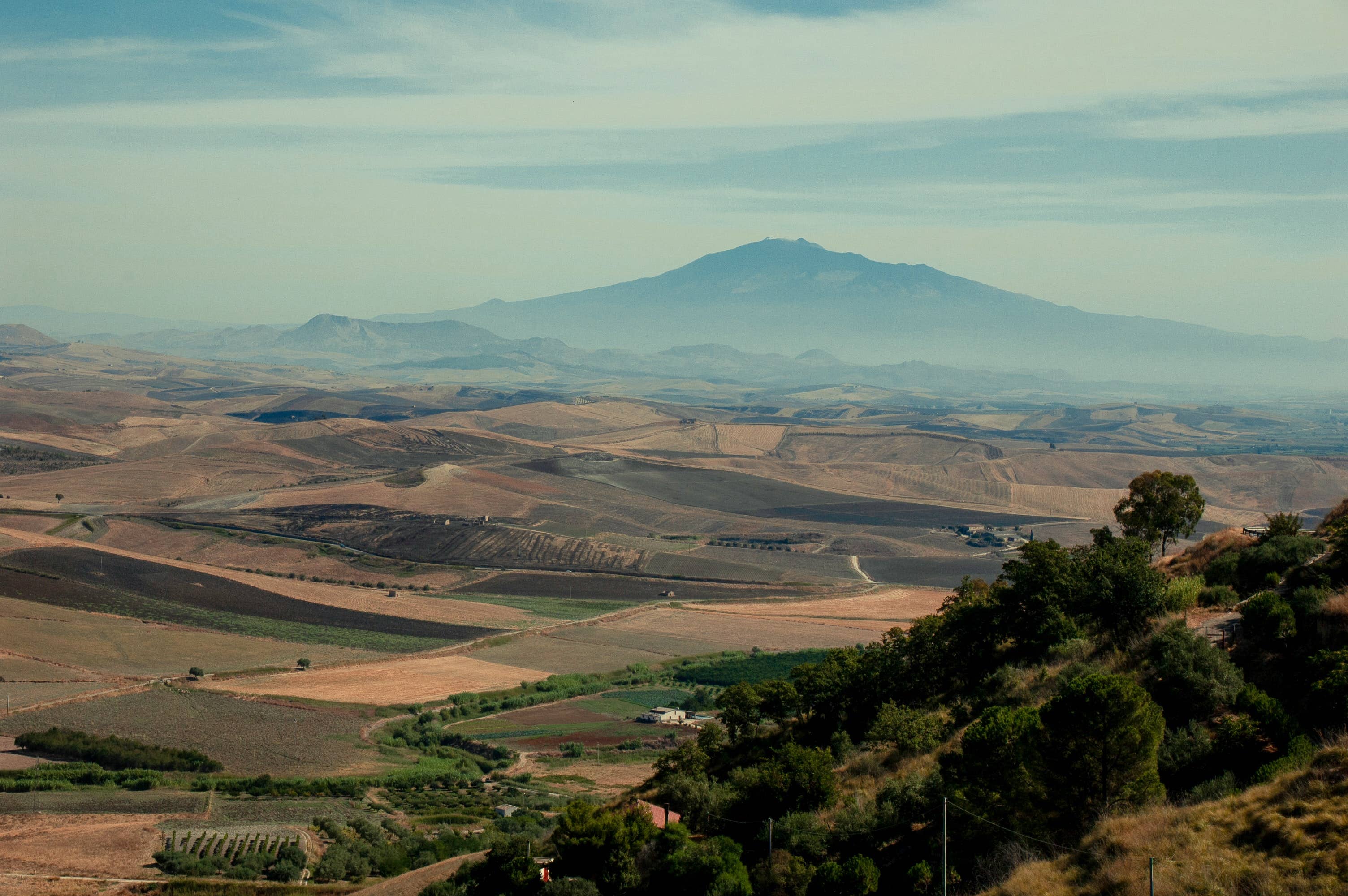

Image credits: Salvatore Ventura
Choosing a spot next to a volcano probably wouldn’t be your first choice, but there’s a large community of wineries around Etna, the tallest active volcano in Europe, where people have been growing grapes for nearly 3,000 years. The fertile soil here is due to the lava and ash left in Etna’s wake over the centuries. The high altitude and nearby water provide a cool and humid microclimate that allows the grapes to ripen slowly and evenly, which preserves their natural acidity and lets them develop a complex aroma.
These all factor into the region’s highly distinctive wines. Etna even has its own designation of controlled origin (DOC), which covers vineyards located at an altitude of 400 to 1,000 m. These bold wines—mostly reds, but also some whites, rosés and sparkling wines—are often said to have strong minerality, refreshing acidity, and remarkable structure and complexity.
Varietals: Nerello Mascalese, Nerello Capuccio, Carricante
Products to try:
Douro: Hard work that pays off
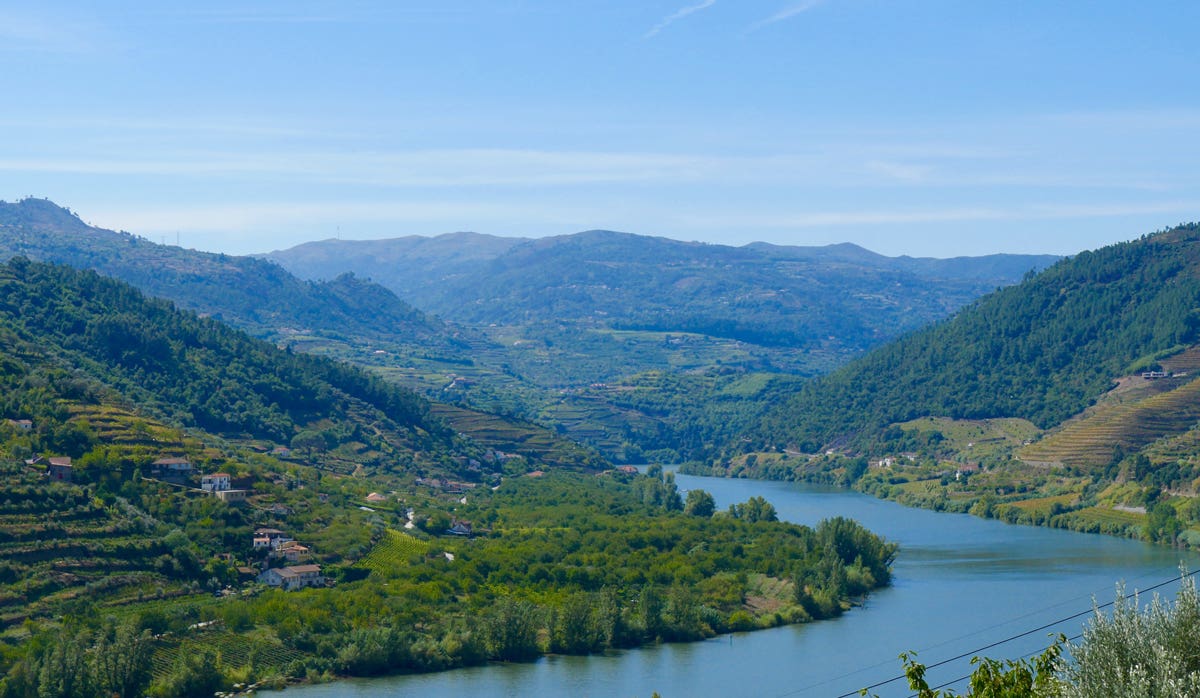

Image credits: Maksym Kaharlytskyi
The wine-producing region of Douro extends over 2,500 km² from Porto to the Spanish border, beside the river that gave the region its name. The surrounding mountains protect the area from winds blowing in from the Atlantic and concentrate the heat in the Douro Valley, creating the perfect conditions for growing grapes. The stepped terraces—shaped by winemakers for 2,000 years—enjoy optimal exposure to the sun and create a breathtaking landscape on steep cliffs overlooking the river. What’s more, all the schist and granite in the soil help it to retain heat, which is great for drainage and proper ripening.
A UNESCO World Heritage Site, this awe-inspiring region is notoriously one of the most difficult places on the planet to cultivate grapes because of the high temperatures, dry weather and steep slopes. But all the hard work bears exceptional fruit—Douro Valley is known for its well-structured and intensely fruity, yet sophisticated reds, its refreshing and aromatic whites with superb acidity, and of course, one of the most famous Spanish products, port wine.
Varietals: Touriga Nacional (the most well-known grape that’s used to make port wine), Touriga Franca, Tinta Roriz (aka Tempranillo), Tinta Barroca, Malvasia Fina, Viosinho, Gouveio, Rabigato.
Products to try:
The Greek island of Santorini
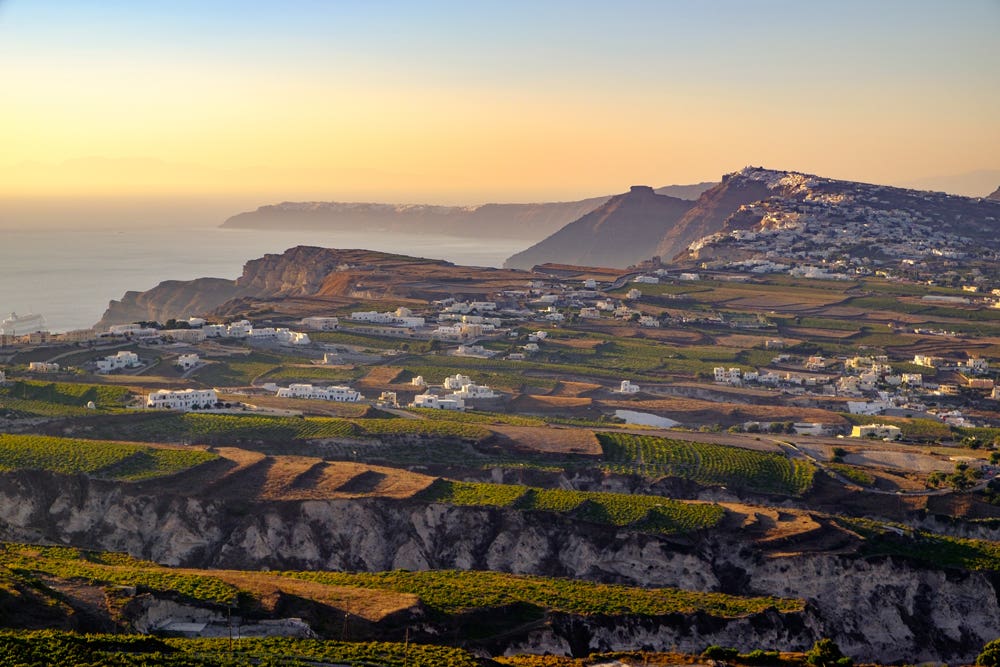

Image credits: iStockphoto
The pearl of the Aegean Sea, Santorini is an archipelago of volcanic islands—with the main one bearing the same name—that enjoys a one-of-a-kind geography. The hot, dry and windy climate and the mineral-rich soil intensify the flavour and aroma of the grapes grown there. The wind that’s constantly blowing in from sea also tempers the humidity and helps cool down the air on hot summer nights. To protect the vines from the wind, sand and sun, local winemakers use an ancestral method called kouloura, where the vines are weaved into the shape of a basket. That way, the grapes can slowly ripen, which makes for deep and complex wines with high acidity.
Here, Assyrtiko grapes reign supreme. They’re an aromatic white varietal with a salty flavour and rich texture. Wines from Santorini typically taste quite fresh and have a pronounced minerality.
Varietals: Assyrtiko, Athiri, Mandilaria, Mavrotragano, Voudomato
Alsace's iconic vineyard
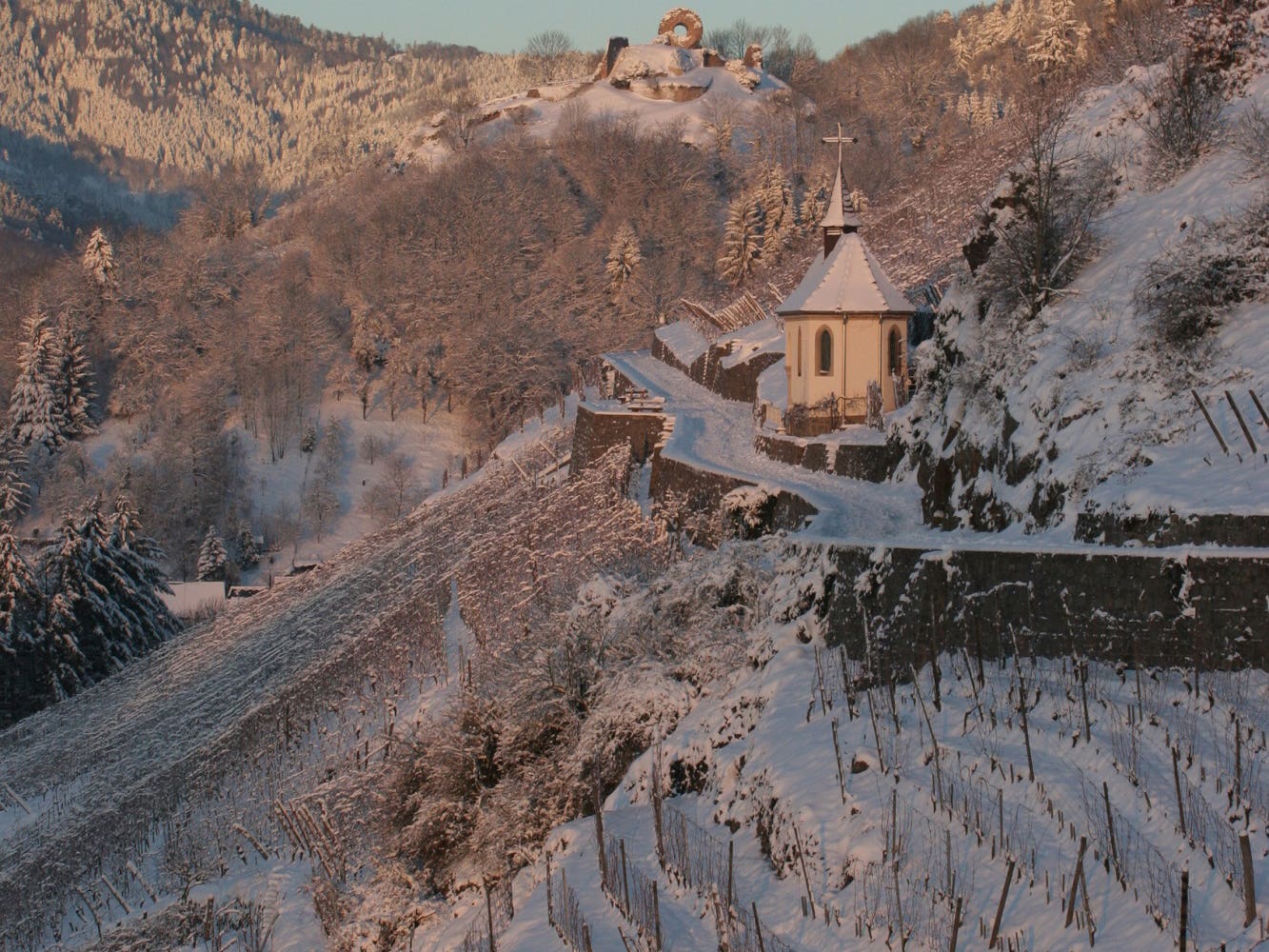

Image credits: Olivier Malbos
The city of Thann is home to the only vineyard in Alsace to be fully classified Grand Cru. Perched on a mountain in Rangen that overlooks the Thur river, it’s also the Grand Cru winery at the highest altitude in Alsace, at 455 m above sea level. Its south-facing hills can be quite steep, with some sloping at a 45° angle. Being at such a high elevation provides the grapes with direct sunlight, which helps their ripening process and brings out their fruitiness.
All of these conditions create the ideal climate for producing fine wine with a wonderful consistency, as do the volcanic sediments in the soil. They retain heat, giving wine from the Rangen region a distinct minerality that echoes this rocky terroir, regardless of the varietal used. The products, with an enticing depth and balance, taste salty and smoky.
Varietals: Pinot Noir, Gewurztraminer, Riesling.
A lebanese pioneer
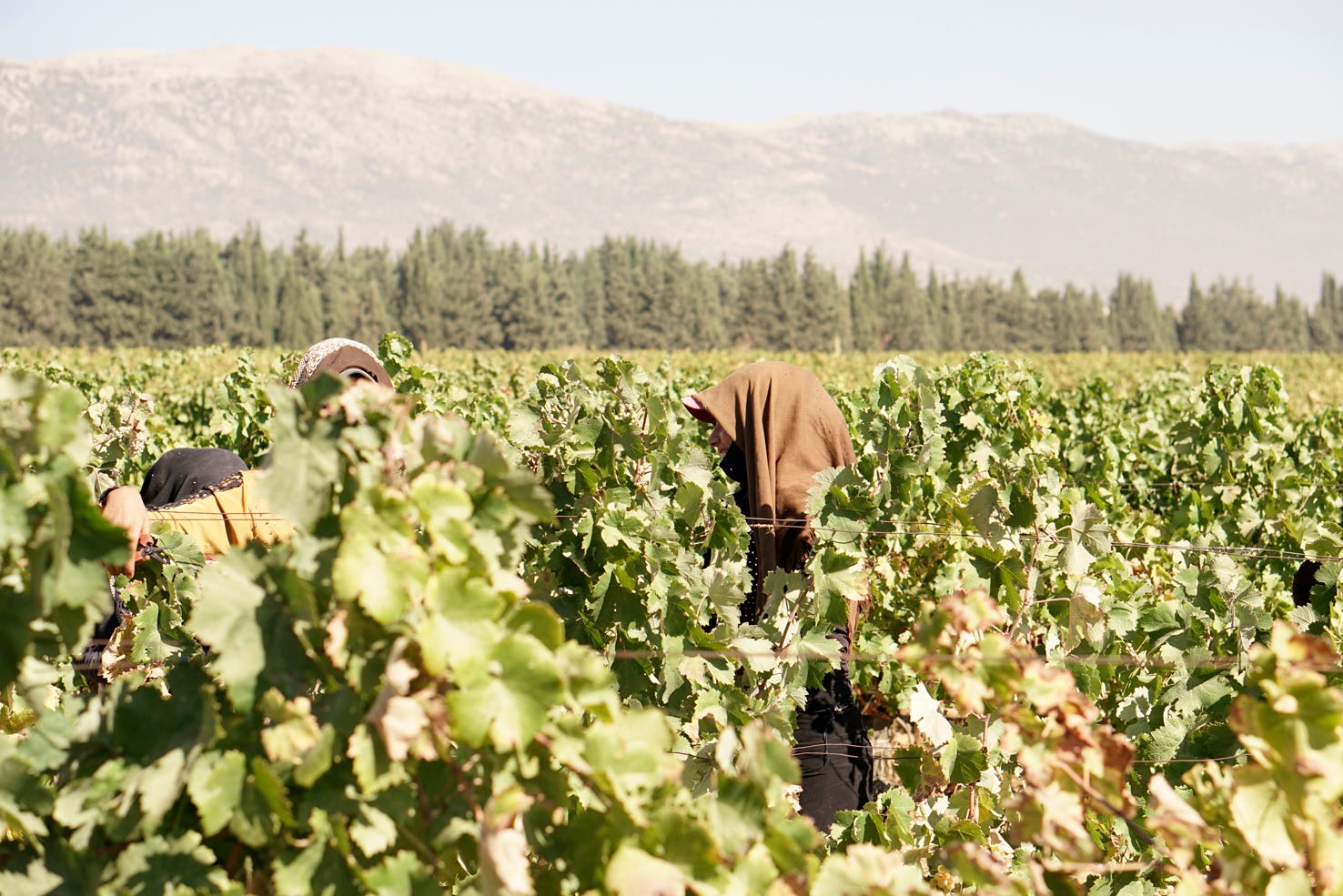

Image credits: Instagram account Château Ksara
The oldest wine estate in Lebanon is Château Ksara. With its 10 vineyards covering almost 5 km² in the Bekaa Valley, it’s also the largest wine property in the country. Thanks to intense sunlight for about 300 days of the year, its vines are able to grow in clay- and limestone-rich soil at an altitude of nearly 1,000 m. The particular terrain of this Lebanese valley combined with its temperate climate—the summers are hot and humid, and the winters, cool and rainy—offer just the right conditions for a number of varietals.
Local varieties are mainly what’s cultivated at Château Ksara, but its wineries also grow certain international grapes like Cabernet Sauvignon, Merlot and Chardonnay. These make for wines with a rich and complex aroma that are appreciated for their full body, balanced profile and great aging potential.
Products to try:
Happy tasting and bon voyage!
We recommand
-
Read more
Santorini is overwhelmingly beautiful. Perched on a volcano that looks as though it could crumble into the Aegean Sea at any given moment, the Cyclades Island is often a destination for newlyweds looking for breathtaking photos. Cyclades also beckons for wine lovers who have a serious crush on Assyrtiko grapes!
-
Read more
Dream beaches, cultural gems, wonders of nature and fine cuisine, the largest island in the Mediterranean has everything to seduce the most seasoned traveler. And if its beauty captivates you, just wait until you taste its wines.
-
Read more
With its unique and vast range of grape varieties, Portugal holds a unique place on the world wine map. A highly accessible place, too, with wines often as inexpensive as they are flavourful.
 Access to SAQ Inspire personalized services and store inventories are unavailable at the moment.
Access to SAQ Inspire personalized services and store inventories are unavailable at the moment. Free in-store delivery with purchases of $75+ in an estimated 3 to 5 business days.
Free in-store delivery with purchases of $75+ in an estimated 3 to 5 business days. 
